Spain’s credit rating upgraded to ’A+’ by S&P on strong growth
Introduction & Market Context
E.ON SE (ETR:EONGn) (XETRA:EOAN) presented its H1 2025 financial results on August 13, 2025, reporting double-digit growth in key financial metrics amid ongoing investments in European energy infrastructure. The company’s stock traded slightly lower at €61.24, down 0.42% in recent sessions, as investors digested the results against a backdrop of broader market volatility.
As Europe’s largest distribution system operator, E.ON continues to position itself as a critical enabler of the continent’s energy transition, with particular focus on grid expansion and digitalization to support renewable energy integration and electrification.
Executive Summary
E.ON delivered strong operational and financial performance in the first half of 2025, with adjusted EBITDA increasing 13% year-over-year to €5.5 billion and adjusted net income rising 10% to €1.9 billion. The company confirmed its full-year 2025 guidance and reaffirmed its 2028 targets, signaling confidence in its long-term growth strategy.
Chief Executive Officer Leonhard Birnbaum emphasized three key pillars driving E.ON’s performance: strong operational and financial delivery, preparation for upcoming German regulatory changes, and acceleration of the energy transition across Europe.
As shown in the following strategic overview:

Quarterly Performance Highlights
E.ON’s H1 2025 results demonstrated solid growth across its core business segments. The Energy Networks division benefited from organic regulatory asset base (RAB) growth, higher volumes, and lower redispatch costs. Energy Infrastructure Solutions saw improvements from normalized weather conditions and higher asset availability, while Energy Retail experienced mixed results due to weather impacts and customer shifts in the UK.
The company’s financial highlights demonstrate consistent progress toward full-year targets:
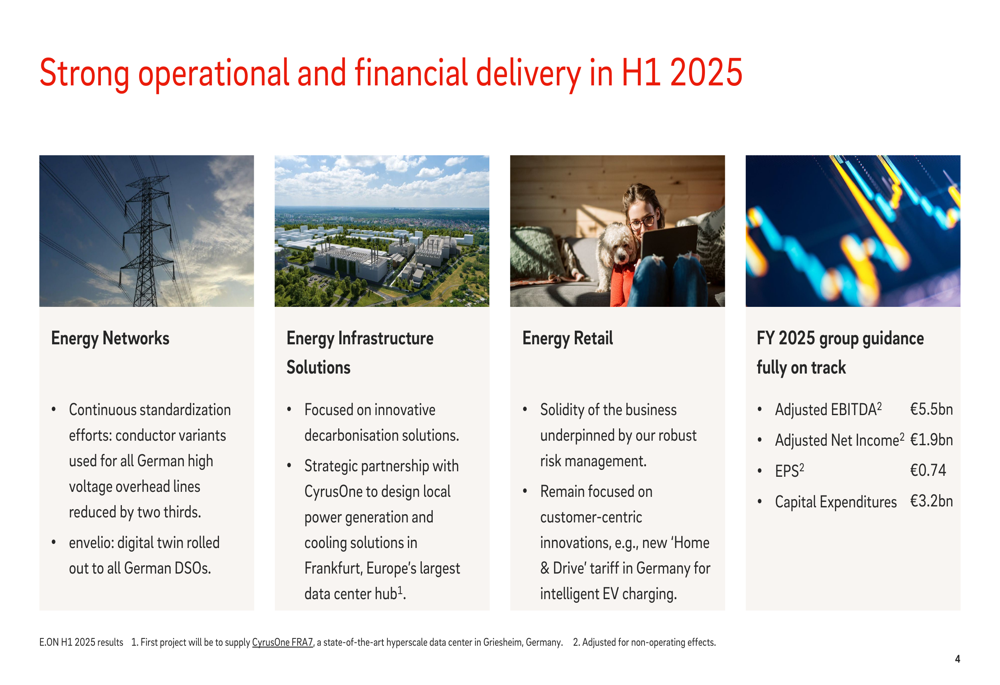
The earnings growth was supported by a 11% year-over-year increase in capital expenditures to €3.2 billion, reflecting E.ON’s continued investment in grid infrastructure and energy transition solutions. These investments are part of the company’s strategy to capitalize on increasing demand for electricity distribution capacity across its European markets.
Detailed Financial Analysis
E.ON’s adjusted EBITDA increased from €4.9 billion in H1 2024 to €5.5 billion in H1 2025, representing a 13% year-over-year growth. This performance was primarily driven by the Energy Networks segment, which continues to be the company’s largest earnings contributor.
The following chart illustrates the key drivers behind E.ON’s first-half earnings performance:
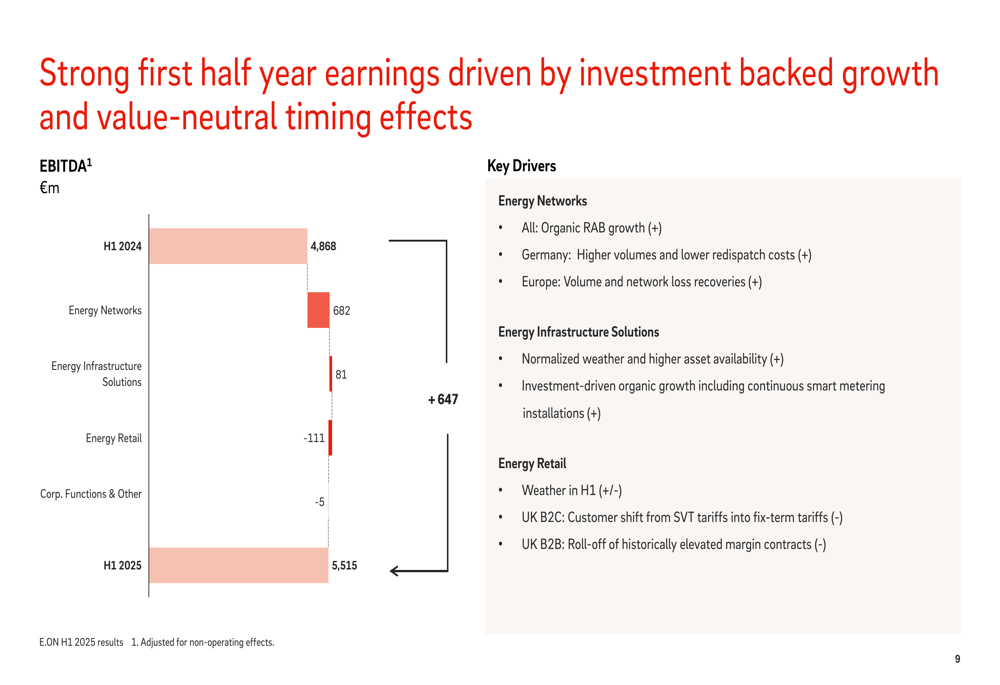
The progression from EBITDA to adjusted net income shows a solid drop-through rate, with adjusted net income reaching €1.9 billion, up 10% compared to the previous year:
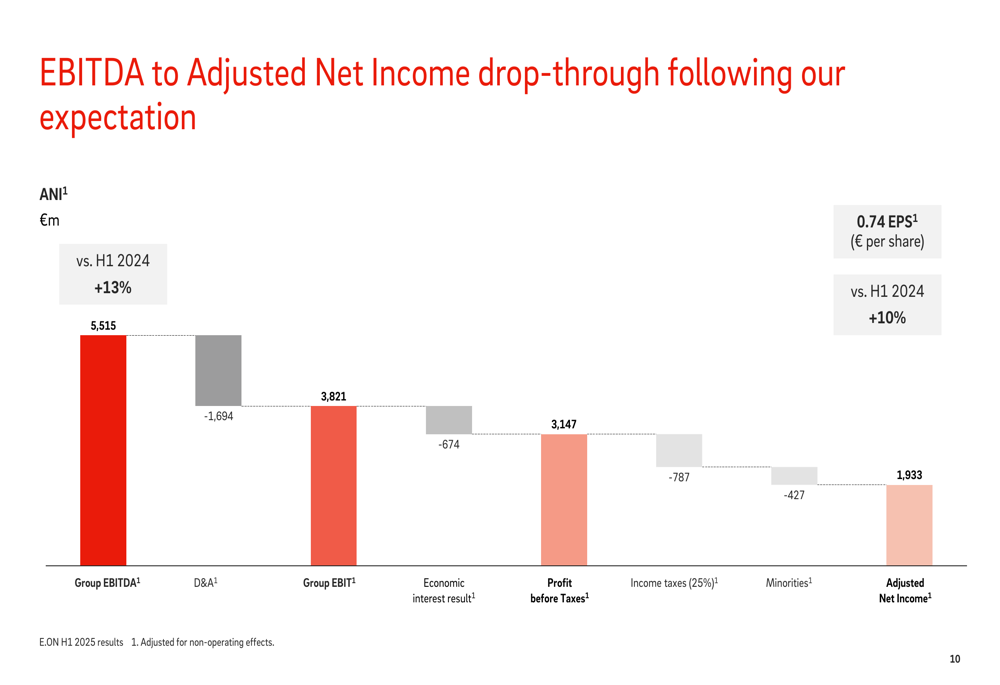
While E.ON’s economic net debt increased to €45.3 billion from €41.1 billion a year earlier, the company maintains that its balance sheet development remains solid. This debt level supports the company’s significant investment program while maintaining its target of a strong BBB/Baa credit rating.
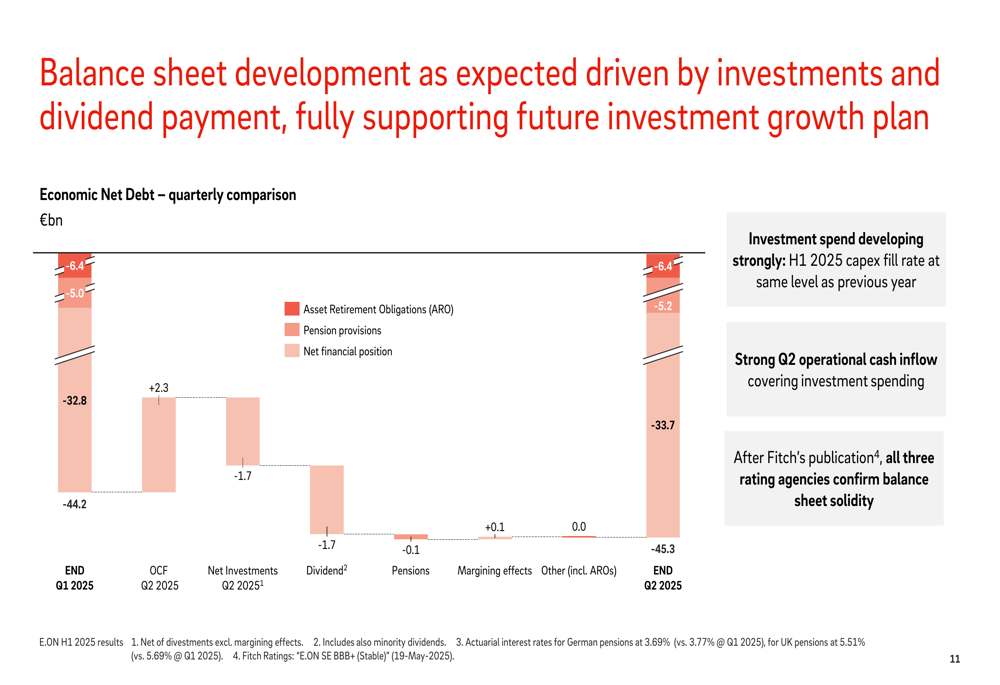
Strategic Initiatives
E.ON continues to focus on three strategic priorities: expanding and digitizing its energy networks, developing innovative energy infrastructure solutions, and enhancing its retail energy business.
In the Energy Networks segment, the company highlighted continuous standardization efforts, reduced conductor variants, and the rollout of digital twin technology to improve operational efficiency. E.ON also noted that more than 60% of its total regulatory asset base is in Germany, where it connects over 80% of new onshore wind capacity.
For Energy Infrastructure Solutions, E.ON emphasized its focus on innovative decarbonization solutions and announced a strategic partnership with data center operator CyrusOne (NASDAQ:CONE). This collaboration will supply energy to CyrusOne’s state-of-the-art hyperscale data center in Griesheim, Germany, reflecting E.ON’s strategy to capitalize on growing energy demand from the digital sector.
The company’s Energy Retail business continues to focus on customer-centric innovations, including the introduction of a ’Home & Drive’ tariff designed to integrate home and electric vehicle energy solutions.
Forward-Looking Statements
E.ON fully confirmed its financial guidance for fiscal year 2025, projecting adjusted EBITDA of €9.6-9.8 billion and adjusted net income of €2.85-3.05 billion. The company also reaffirmed its 2028 targets of EBITDA exceeding €11.3 billion and adjusted net income of approximately €3.4 billion.
The following slide details E.ON’s guidance and medium-term targets:
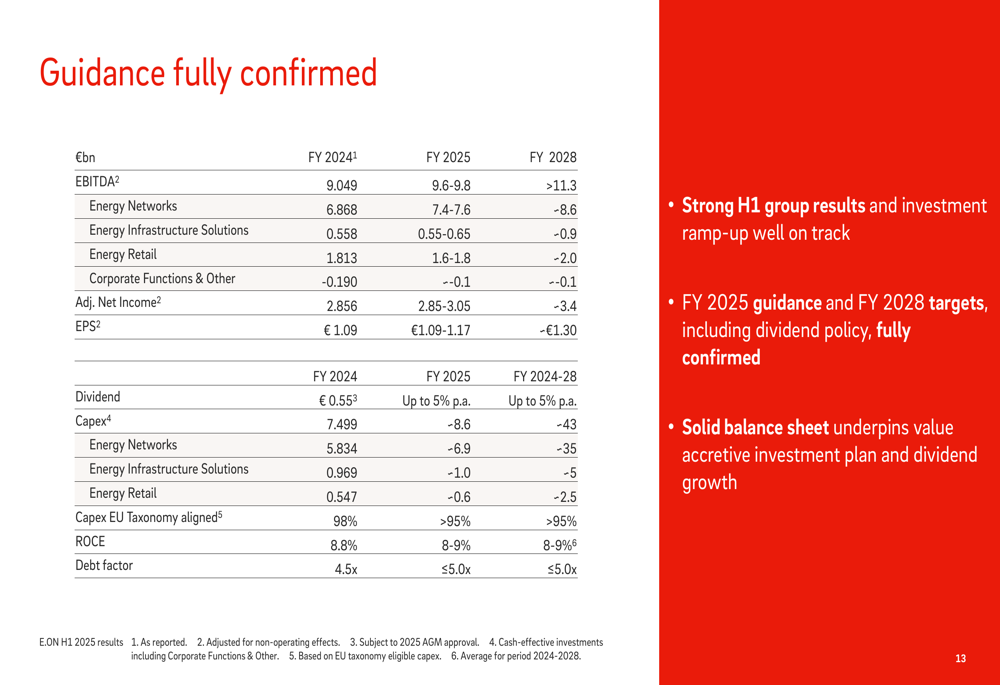
A significant focus for E.ON is the upcoming German regulatory framework for 2029-2033 (Regulatory Period 5 or RP5). The company is actively engaged in the consultation process, with draft proposals already published. Key elements include a simplified remuneration concept based on weighted average cost of capital (WACC) and changes to the efficiency benchmarking methodology.
E.ON emphasized that it is well-prepared to accelerate energy transition investments if the regulatory conditions prove attractive. The company also highlighted strong political support for grid expansion at both German and EU levels, with better synchronization of renewable energy build-out and grid infrastructure development.
Chief Financial Officer Nadia Jakobi underscored the company’s sound funding strategy, which supports sustainable growth through diversified financing instruments:
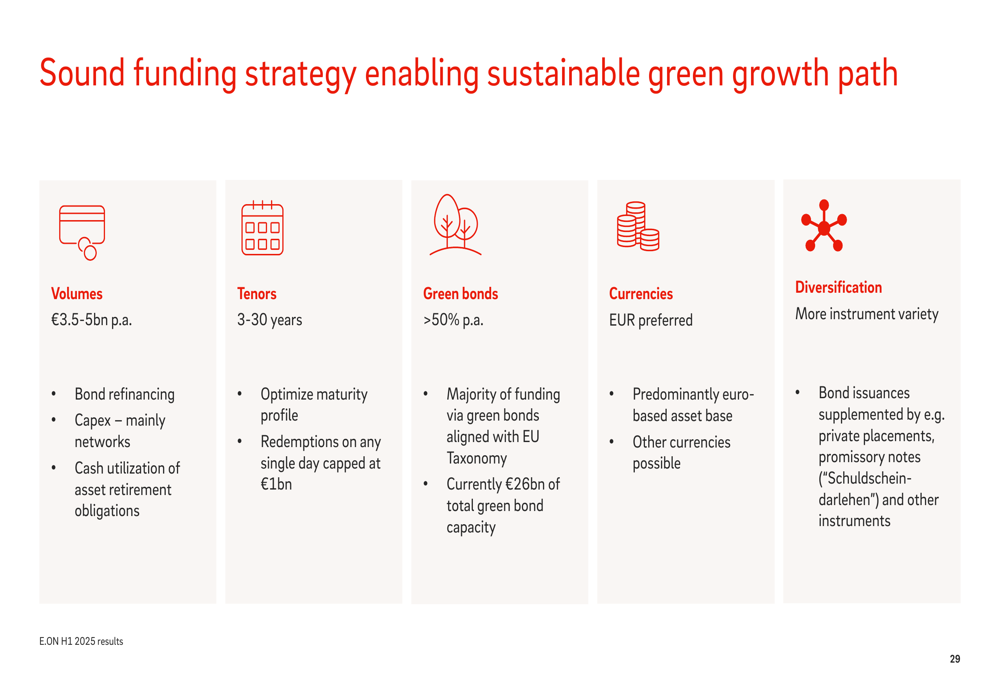
E.ON’s dividend policy remains unchanged, targeting growth of up to 5% annually, supported by the company’s strong operational performance and strategic positioning in the European energy transition landscape.
Full presentation:
This article was generated with the support of AI and reviewed by an editor. For more information see our T&C.
